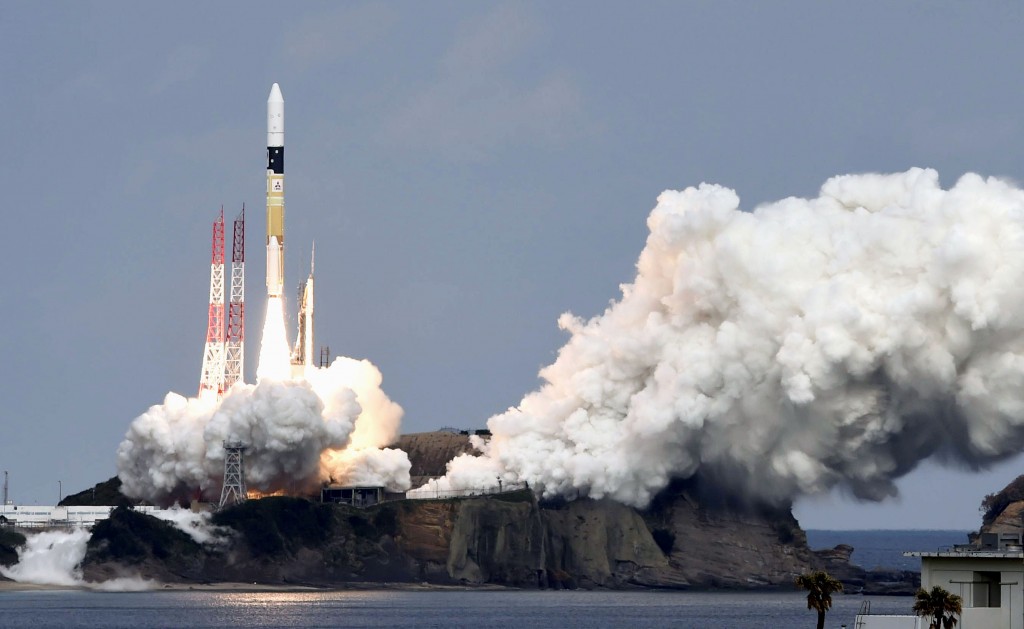- California Assembly OKs highest minimum wage in nation
- S. Korea unveils first graphic cigarette warnings
- US joins with South Korea, Japan in bid to deter North Korea
- LPGA golfer Chun In-gee finally back in action
- S. Korea won’t be top seed in final World Cup qualification round
- US men’s soccer misses 2nd straight Olympics
- US back on track in qualifying with 4-0 win over Guatemala
- High-intensity workout injuries spawn cottage industry
- CDC expands range of Zika mosquitoes into parts of Northeast
- Who knew? ‘The Walking Dead’ is helping families connect
Sequel to Philae: Japanese space explorer to blow crater in asteroid

An H2-A rocket carrying space explorer Hayabusa2, lifts off from a launching pad at Tanegashima Space Center in Kagoshima, southern Japan, Wednesday, Dec. 3, 2014. The Japanese space explorer was launched Wednesday on a six-year roundtrip journey to blow a crater in a remote asteroid and collect samples from inside in hopes of gathering clues to the origin of earth. (AP Photo/Kyodo News)
TOKYO (AP) — A Japanese space probe named after a falcon blasted off on Wednesday, setting off on a six-year round trip to an asteroid for samples that scientists hope will help reveal the origins of life.
The launch of the Hayabusa 2, postponed twice because of bad weather, comes less than a month after a European Space Agency probe landed on a comet in a pioneering mission.
Hayabusa means peregrine falcon in Japanese.
The probe will map the surface of the asteroid before touching down, deploying small explosives to blast a crater and then collect resulting debris.
Asteroids are believed to have formed at the dawn of the solar system and the probe’s target is one called 1999 JU3, which scientists believe contains organic matter that may have contributed to life on Earth.
The probe is expected to arrive at the asteroid in mid-2018 and return with samples in 2020, the year that Tokyo hosts the Summer Olympic Games.
The mission should help Japan’s space programme put a troubled past well behind it.
The first Hayabusa probe was unable to collect as much material as hoped but still made history by being the first vessel to bring back samples from an asteroid. Its seven-year mission ended in 2010 when it blazed a trail over Australian before slamming into the desert.
Both probes were developed by the Japan Aerospace Exploration Agency.
The first Hayabusa probe was launched on the domestically developed H-2A rocket, as was Hayabusa 2. In 2003, an H-2A rocket carrying two spy satellites veered off course and had to be destroyed.
The Hayabusa 2 launch was first scheduled for Nov. 30 but delayed twice by bad weather. The last chance for a successful launch before 2016 would have been Dec 7.
The European Space Agency’s Philae probe finished a 57-hour mission on the surface of a comet on Nov. 15, but lost battery power due to landing in a spot shielded from the sun it needed to charge the battery for an extended mission.















